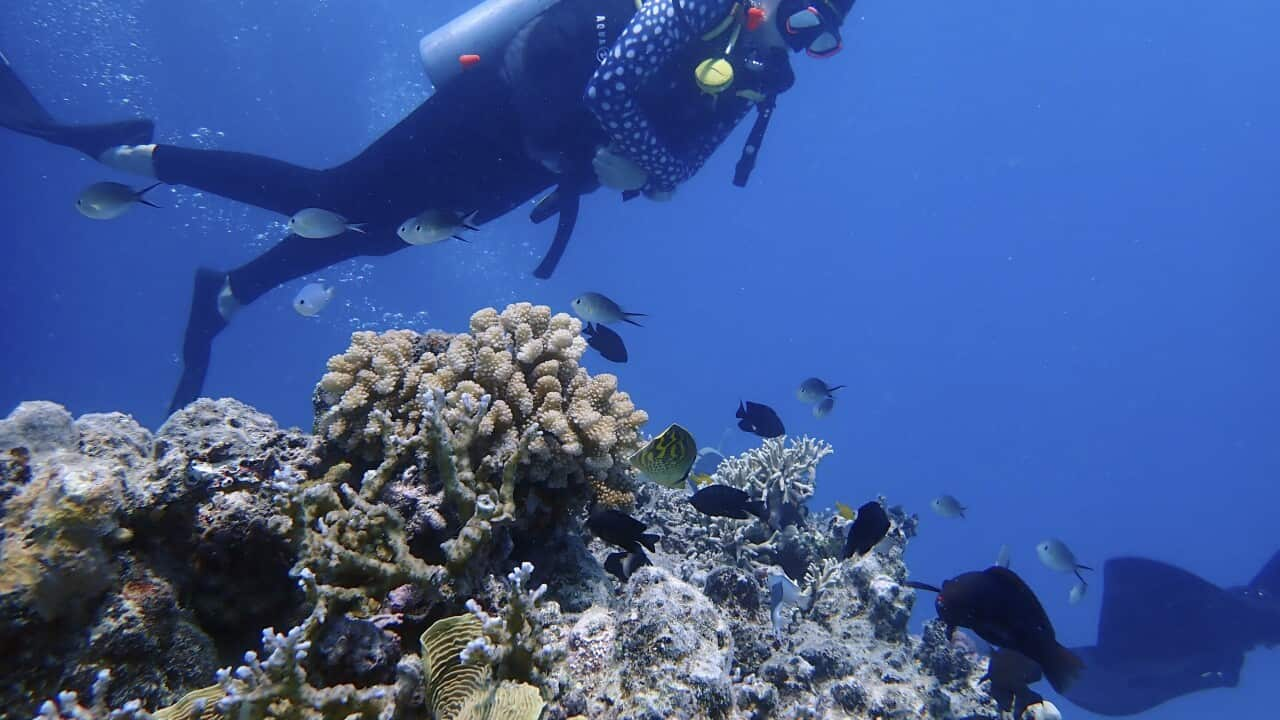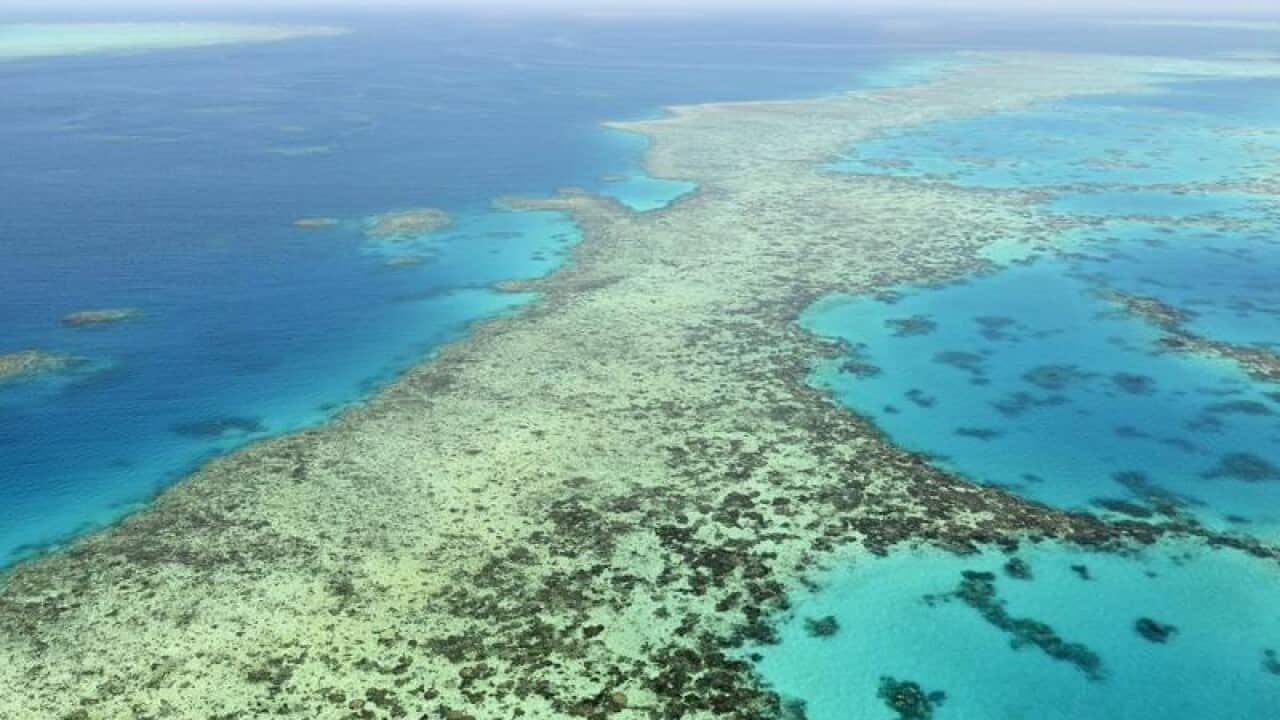Another significant bleaching event is unfolding on the Great Barrier Reef ahead of a key international visit to take the ecosystem's pulse.
Early results from monitoring work along the length of the 2,300km World Heritage-listed reef show it's in trouble again.
A three-week, end of summer heatwave has compounded the effects of the reef's hottest December on record.
Unless conditions ease in the next couple of weeks, the World Heritage-listed site could be in for its fourth mass bleaching event in six years.
"Bleaching has been detected across the marine park — it is widespread but variable, across multiple regions, ranging in impact from minor to severe," the Great Barrier Reef Marine Park Authority said on Friday.
Whole colonies have bleached in some instances, but so far most observations are of early-stage impacts. Some parts of the reef have recorded sea surface temperatures 2-4C above average.
The marine park authority's chief scientist David Wachenfeld says more frequent and severe bleaching events are evidence of the growing impacts of climate change, which is driving up ocean temperatures.
He says weather conditions over the next fortnight will determine how bad things get, but accumulated heat stress for corals over much of the reef match what was seen during the 2016, 2017 and 2020 bleachings.
The 2016 event was the worst so far, triggering mass coral deaths and drastically altering species composition for about a third of individual reefs that make up the vast ecosystem, one study found.
Dr Wachenfeld says not all bleached corals die and they can recover if heat stress eases, but their immune and reproductive systems inevitably suffer.
"And that, of course, is of concern as yet another element of the growing impacts of climate change to Great Barrier Reef," he said.
Aerial surveillance missions that began last weekend should be finished by mid-week, providing a comprehensive picture of the scale of the incident.
Dr Wachenfeld says the results will be part of a briefing to a United Nations mission due to arrive next week at Australia's request to assess the reef and report back to the World Heritage Committee.
Federal Environment Minister Sussan Ley says any bleaching event is cause for concern and that's why the government is spending an extra $1 billion on reef resilience.
"We have always been clear that climate change and rising temperatures are the greatest threat to reefs around the world including the Great Barrier Reef," she said.
But conservation groups say the government's enduring support for fossil fuel industries and its emission reduction targets that lag behind other nations are incompatible with reef protection.
"If the Morrison government wants to avoid an 'in danger' listing for the reef, it must strengthen its climate targets and policies in line with the science," Australian Conservation Foundation CEO Kelly O'Shanassy says.
Greenpeace said it was incredibly alarming that bleaching was unfolding under the La Niña weather phenomenon that typically keeps ocean temperatures lower.
Earlier this month, a major report by the Intergovernmental Panel on Climate Change said the reef was in crisis and could be bleaching every year after 2044.
It takes about 10 years for decent recovery of fast-growing corals and longer for slow-growing species.











